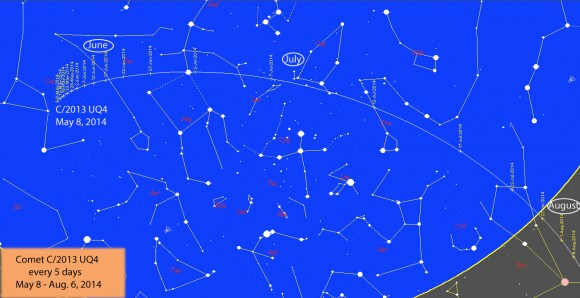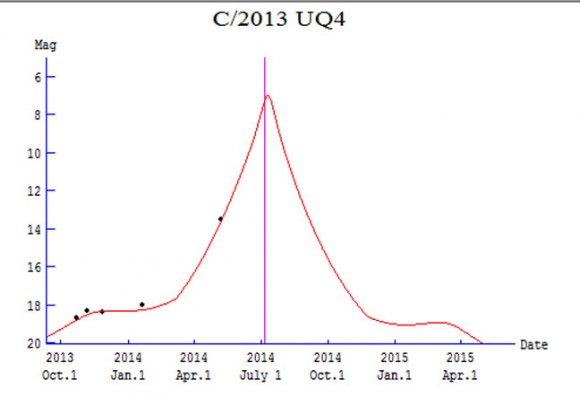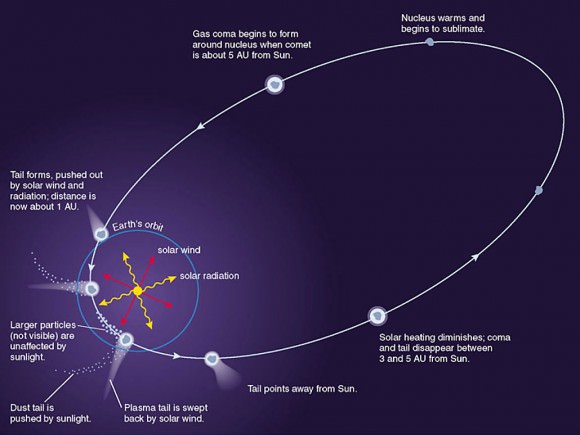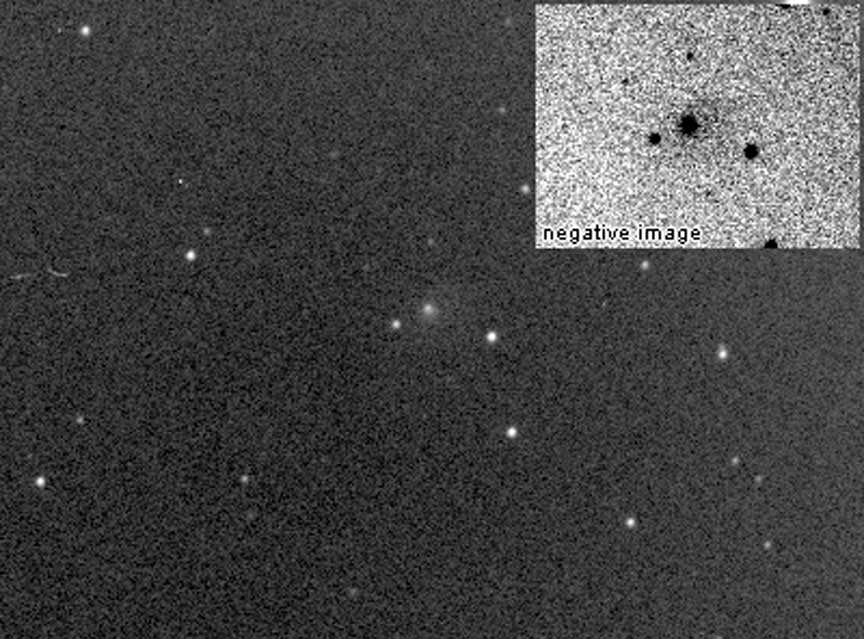On October 23, 2013, astronomers with the Catalina Sky Survey picked up a very faint asteroid with an unusual orbit more like a that of a comet than an asteroid. At the time 2013 UQ4 was little more than a stellar point with no evidence of a hazy coma or tail that would tag it as a comet. But when it recently reappeared in the morning sky after a late January conjunction with the sun, amateur astronomers got a surprise.
On May 7, Comet ISON co-discoverer Artyom Novichonok, and Taras Prystavski used a remote telescope located in Siding Spring, Australia to take photos of 2013 UQ4 shortly before dawn in the constellation Cetus. Surprise, surprise. The asteroid had grown a little fuzz, making the move to comethood. No longer a starlike object, 2013 UQ4 now displays a substantial coma or atmosphere about 1.5 arc minutes across with a more compact inner coma measuring 25 arc seconds in diameter. No tail is visible yet, and while its overall magnitude of +13.5 won’t make you break out the bottle of champagne, it’s still bright enough to see in a 12-inch telescope under dark skies.

The best is yet to come. Assuming the now renamed C/2013 UQ4 continues to spout dust and water vapor, it should brighten to magnitude +11 by month’s end as it moves northward across Pisces and into a dark morning sky. Perihelion occurs on June 5 with the comet reaching magnitude +8-9 by month’s end. Peak brightness of 7th magnitude is expected during its close approach of Earth on July 10 at 29 million miles (46.7 million km).
This should be a great summer comet, plainly visible in binoculars from a dark sky as it speeds across Cepheus and Draco during convenient viewing hours at the rate of some 7 degrees per night! That’s 1/3 of a degree per hour or fast enough to see movement through a telescope in a matter of minutes when the comet is nearest Earth.

Come August, C/2013 UQ4 rapidly fades to magnitude +10 and then goes the way of so many comets – a return to a more sedentary lifestyle in the cold bones of deep space.
C/2013 UQ4 belongs to a special category of asteroids called damocloids (named for asteroid 5335 Damocles) that have orbits resembling the Halley-family comets with long periods, fairly steep inclinations and highly eccentric orbits (elongated shapes). Some, like Comet Halley itself, even travel backwards as they orbit the sun, an orbit astronomers describe as ‘retrograde’.

Damocloids are thought to be comets that have lost all their fizz. With their volatile ices spent from previous trips around the sun, they stop growing comas and tails and appear identical to asteroids. Occasionally, one comes back to life. It’s happened in at least four other cases and appears to be happening with C/2013 UQ4 as well.
Studies of the comet/asteroid’s light indicate that UQ4 is a very dark but rather large object some 4-9 miles (7-15 km) across. It’s estimated that C/2013 UQ4 takes at least 500 years to make one spin around the sun. Count yourself lucky this damocloid decided to spend its summer vacation in Earth’s skies. We’ll have more detailed maps and updates as the comet becomes more easily visible next month. Stay tuned.

